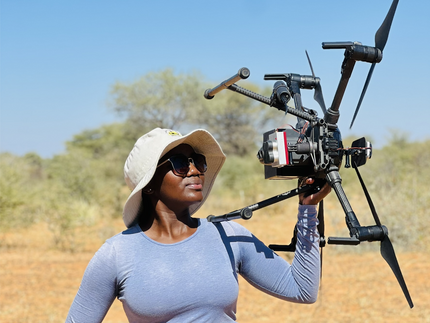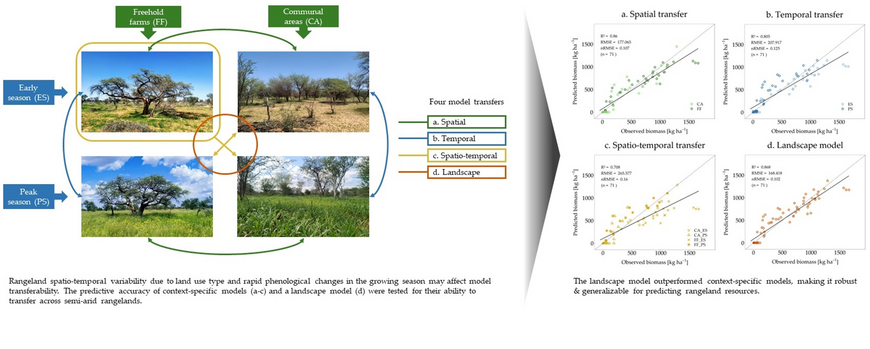May 2024: New paper on drone-based models to predict forage supply
Drones offer a cost-effective way to monitor rangelands, but their models may struggle to accurately predict forage availability due to spatial and temporal variations. The recently published study by Vistorina Amputu, Florian Männer, Katja Tielbörger, and Nicola Knox tested drone-based models in semi-arid Namibian rangelands. They considered spatial variations due to different land uses and rapid temporal changes throughout the growing season. Case-specific models, particularly those developed for specific times of the season, showed lower prediction accuracies, likely due to rapid phenological changes. This highlights a significant limitation in the generalization of such models within dynamic systems and the constraints they may pose for broader applicability. The landscape model that incorporated both spatial and temporal variations performed the best, making it ideal for mapping forage supply across the rangeland system. Overall, this research enhances our understanding of the generality of drone-based models, paving the way for more accurate monitoring of forage resources and thereby enhancing sustainable rangeland management practices.
The full paper, which was published in the journal Remote Sensing, can be found here.


